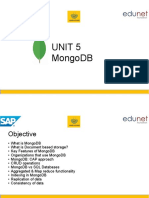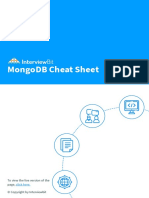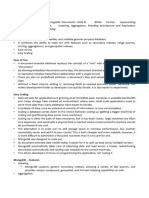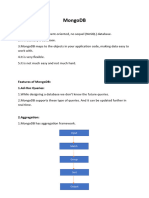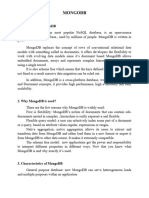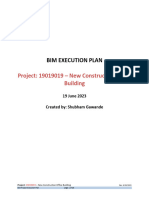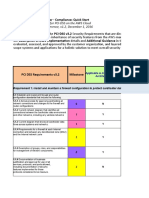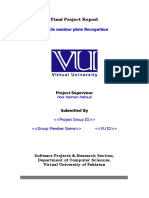0% found this document useful (0 votes)
17 views61 pagesNosql Module 4
Document databases store and manage documents in formats like XML and JSON, allowing for flexible schemas where documents can vary in structure. MongoDB, a popular document database, utilizes replica sets for high availability and offers features like WriteConcern for managing data consistency. The document model supports complex queries and can scale horizontally for both read and write operations, making it suitable for applications like event logging and content management systems.
Uploaded by
Raghavendra gsCopyright
© © All Rights Reserved
We take content rights seriously. If you suspect this is your content, claim it here.
Available Formats
Download as PDF, TXT or read online on Scribd
0% found this document useful (0 votes)
17 views61 pagesNosql Module 4
Document databases store and manage documents in formats like XML and JSON, allowing for flexible schemas where documents can vary in structure. MongoDB, a popular document database, utilizes replica sets for high availability and offers features like WriteConcern for managing data consistency. The document model supports complex queries and can scale horizontally for both read and write operations, making it suitable for applications like event logging and content management systems.
Uploaded by
Raghavendra gsCopyright
© © All Rights Reserved
We take content rights seriously. If you suspect this is your content, claim it here.
Available Formats
Download as PDF, TXT or read online on Scribd
/ 61




















